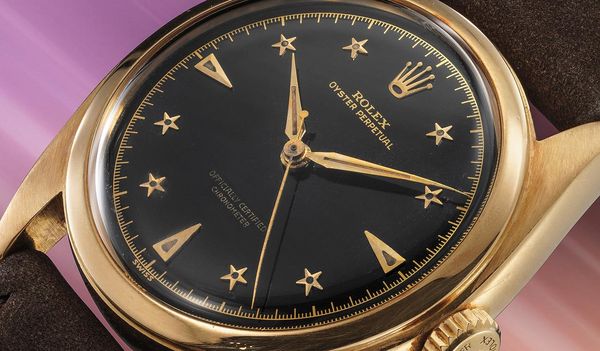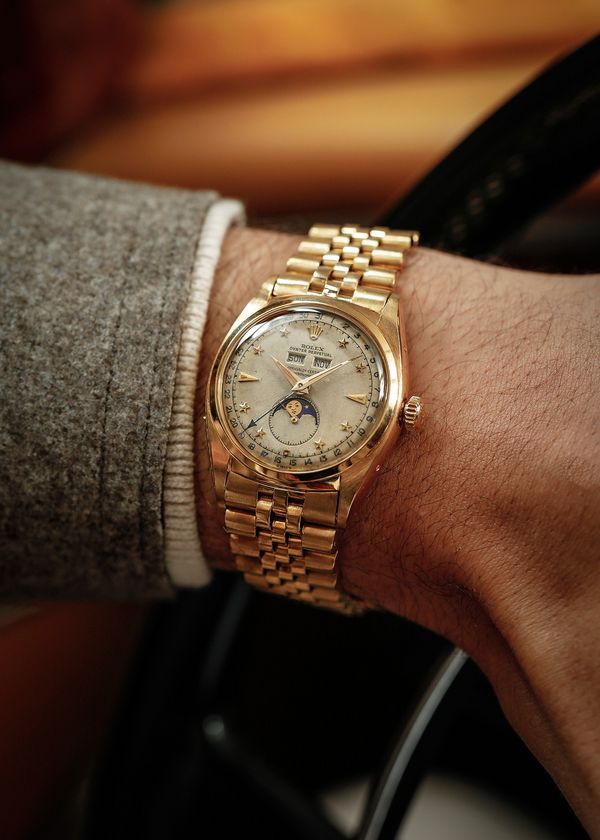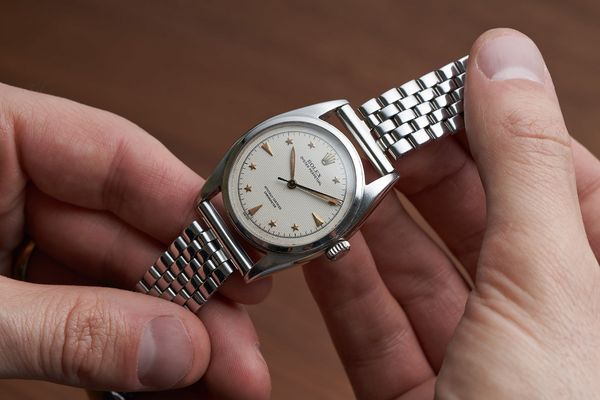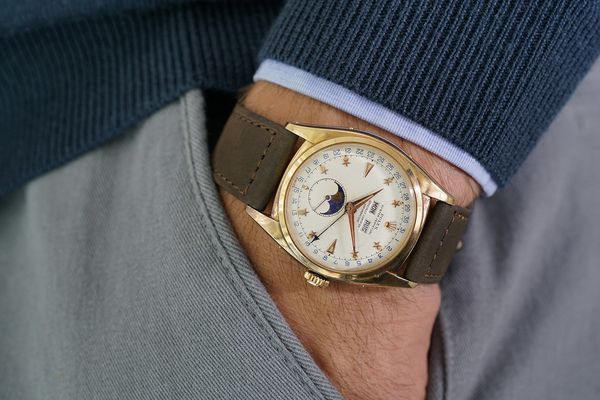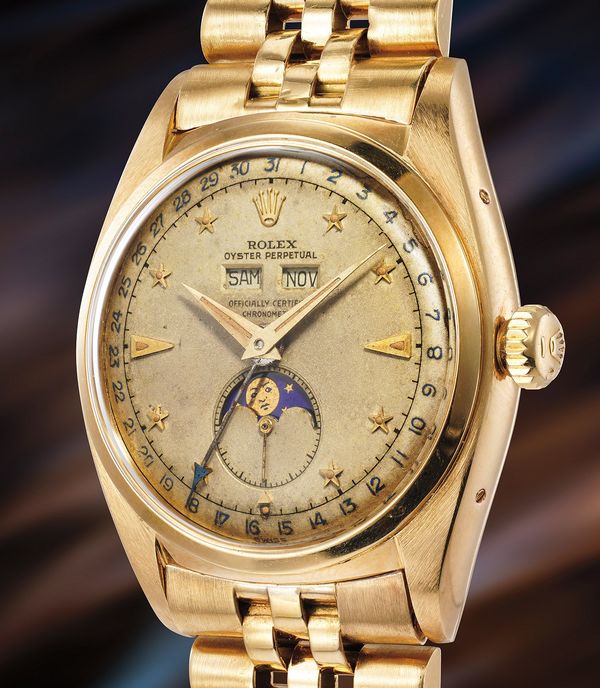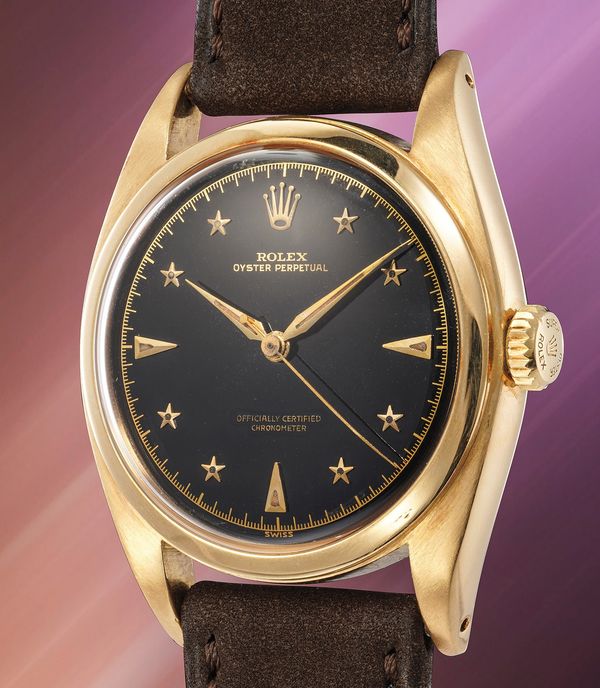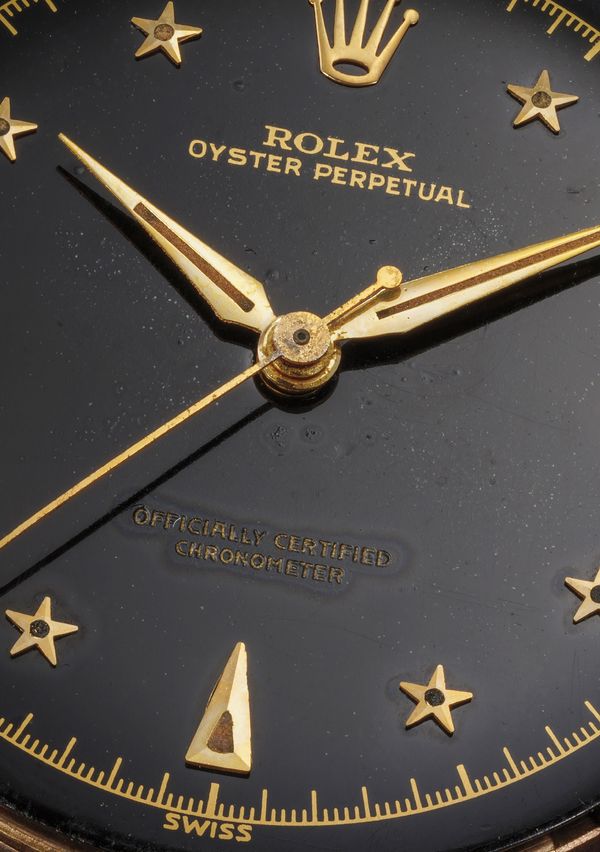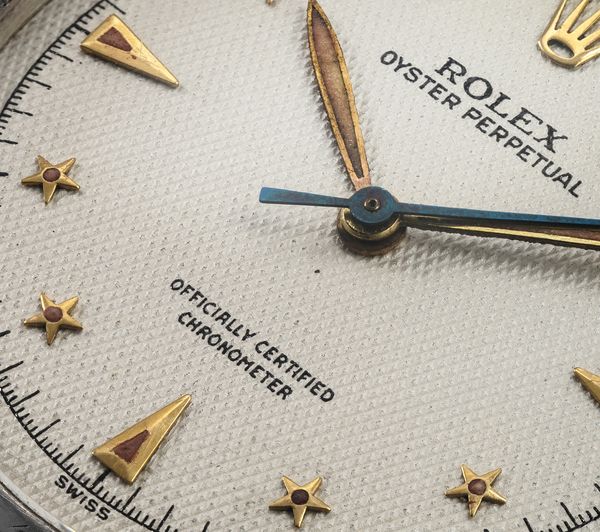Our first live auction of 2024, the PHILLIPS Geneva Watch Auction: XIX, takes place on May 11 and 12, at the Hotel President, at Quai Wilson 47 in central Geneva. The auction includes more than 215 of the world's finest watches – and though we are loath to boast, we truly think it's one of the best catalogs we've ever put together. We'll be highlighting a number of the most interesting lots and stories featured in the sale over the next month, including two of the Rolex models highlighted below (here and here).
– By Logan Baker
Rolex is known worldwide as “The Crown.”
It’s a fitting title, not only because the Swiss watchmaking giant adopted it as its brand insignia starting in the 1930s but also because of the position Rolex occupies at the top of the mountain in the minds of watch-curious consumers, and for the huge economic advantage it maintains over the rest of the watch world.
There’s another, less-recognized symbol that Rolex has tied itself to for decades that similarly connotes the presence of a higher power – except rather than referencing the headwear of an earthly monarch, it’s actually entirely celestial figure.
The usage of applied hour markers in the shape of a star is best known for appearing on certain examples of Rolex’s legendary triple-calendar moon-phase, the ref. 6062, from the early 1950s. This configuration in the ref. 6062 is known as having a “Stelline” dial (Italian for little stars).
Only a few references were produced by Rolex with the stelline application – including the time-only references 6024, 6088, 6090, 6098, and 6244, alongside the more complicated ref. 6062 – starting in 1946, but they appear most commonly on dials made between the years of 1950 and 1953.
(And no, we won't be discussing the so-called "Star Dust" patina that has developed on some mid-1980s Rolex Sea-Dwellers in this article.)
The Rolex Triple Calendar Moon-Phase Ref. 6062
The most expensive watch ever sold at auction at one point in time was a Rolex triple-calendar moon-phase ref. 6062 originally owned by the Bao Dai, the last Emperor of Vietnam. It sold at the Phillips Geneva Watch Auction: FIVE, in May 2017, for an incredible sum of CHF 5,066,000.
Despite that incredible result and the overall desirability of the 6062, it’s believed by many scholars and collectors that the stelline configuration is actually the most common type of hour marker found on the 6062 series, with more publicly known examples than either the applied pyramid or spade marker options.
Stelline hour markers can be found on both two-tone and black dial examples of the ref. 6062. However, within Rolex's entire production run of stelline 6062 dials, two distinctive generations have been identified. Earlier dials placed a dot of lume on the dials directly next to the hour markers, while later dial versions incorporated the luminescent material directly to the center of each applied star index.
Interestingly, the earlier stelline dials with separate lume plots also feature the chronometer signature below the in-line calendar apertures (for month and day of week), while the later stelline dials incorporated the text directly into the small seconds display.
Pink-gold 6062s with stelline dials all seem to be fitted with the earlier dial generation. The stelline dials were some of the first 6062 examples produced, confirmed by a typical serial number range starting 690 xxx, corresponding to a likely 1950 or 1951 production.
An 18k yellow gold ref. 6062 is included in the upcoming Phillips Geneva Watch Auction: XIX. It's lot 214 in the catalog, and it carries an estimate of CHF 120,000 - 240,000.
The Time-Only 'Galaxy' Series
Fitted with a round automatic movement, these watches featured a larger case diameter than the fashionable "bubble backs" of the 1930s and 1940s, thus having a greater presence on the wrist. Rolex arguably produced some of the most creative and attractive watches during the postwar period – while some were fitted with a honeycomb dial, others featured applied Arabic numerals and even cloisonné enamel works of art.
A small number of time-only references using the star-shaped applied hour numerals were produced by Rolex alongside the ref. 6062, appearing under various references, including the ref. 6088, ref. 6098, and ref. 6090. These models (and a few others) were occasionally described by Rolex as the “Galaxy” series of wristwatches in dedicated print advertisements at the time.
The ref. 6098 "Galaxy" model is the most common of the time-only series; it also shares the same 36mm Oyster-style case with the ref. 6088 that was crafted by Genex SA, a casemaking subsidiary of the legendary dialmaker Stern Frères. This case is effectively identical to the case used on the more complicated ref. 6062. It's believed that Stern Frères was the sole producer of "star"-type dials for Rolex.
The ref. 6090, meanwhile, had a smaller 32mm case with dramatic, bombé-style lugs. Other references that are known to have featured a "star" dial at some point in time include the references 2705 (believed to be the first Rolex watch with the dial), the 6024 (only two known examples), the ref. 6244, and the ref. 6426.
The first of the 1950s "Galaxy" models to come out is believed to be the ref. 6024. It uses a manual-wind movement, unlike the automatic found in the more common ref. 6098. Only two examples of the ref. 6024 have been publicly identified to date; both feature white honeycomb dials with the star-shaped appliques.
The ref. 6098, the most commonly seen "Galaxy" model found today, has been correctly identified with either a white honeycomb dial (eight known examples) or a glossy black dial (three known examples). Only a single example of its sibling model, the ref. 6088, has publicly appeared. At the Geneva Watch Auction: FIVE, in May 2017, Phillips sold the unique black-dial watch for a record CHF 670,000.
Black dial examples of the ref. 6098 and ref. 6088 are the rarest and most desirable of all the various "Galaxy" references and models. A circa 1953 Rolex Oyster Perpetual "Galaxy" ref. 6098 in 18k yellow gold with a glossy black dial is included in the catalog (lot 218) of the upcoming Phillips Geneva Watch Auction: XIX; it has an estimate of CHF 150,000 - 300,000.
Lastly, the "Galaxy" ref. 6090, is quite a different looking watch compared to the ref. 6098 and ref. 6088, featuring a smaller, water-resistant 32mm case with a flared bombé lug design. And unlike the previous watches, the ref. 6090 used two different movements during its production lifespan.
You can learn more, place a bid, and view the entire Geneva Watch Auction: XIX catalog right here.
About Phillips In Association With Bacs & Russo
The team of specialists at PHILLIPS Watches is dedicated to an uncompromised approach to quality, transparency, and client service. Phillips in Association with Bacs & Russo holds the world record for the most successful watch auction, with its Geneva Watch Auction: XIV having realized $74.5 million in 2021. Over the course of 2021 and 2022, the company sold 100% of the watches offered, a first in the industry, resulting in the highest annual total in history across all the auction houses at $227 million.
About Logan Baker
Logan has spent the past decade reporting on every aspect of the watch business. He joined Phillips in Association with Bacs & Russo at the start of 2023 as the department's Senior Editorial Manager. He splits his time between New York and Geneva.
Recommended Reading
A Complete History Of The Legendary Rolex Triple Calendar Moonphase Ref. 6062
What's The Legacy Of The Rolex Milgauss?
Understanding The Rolex Cosmograph Daytona Ref. 16520 'Darth Vader'
